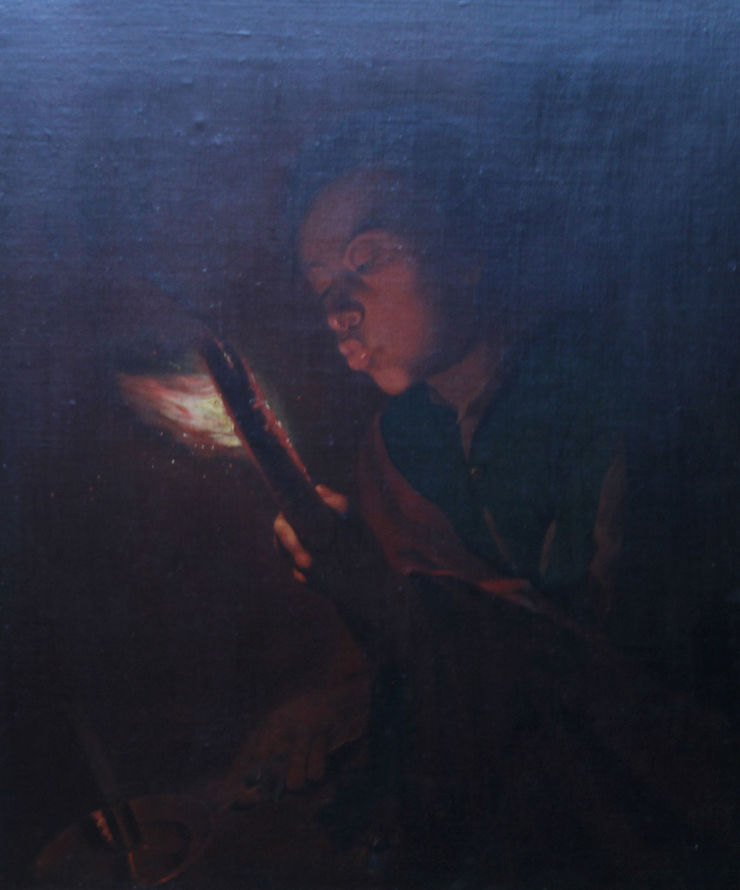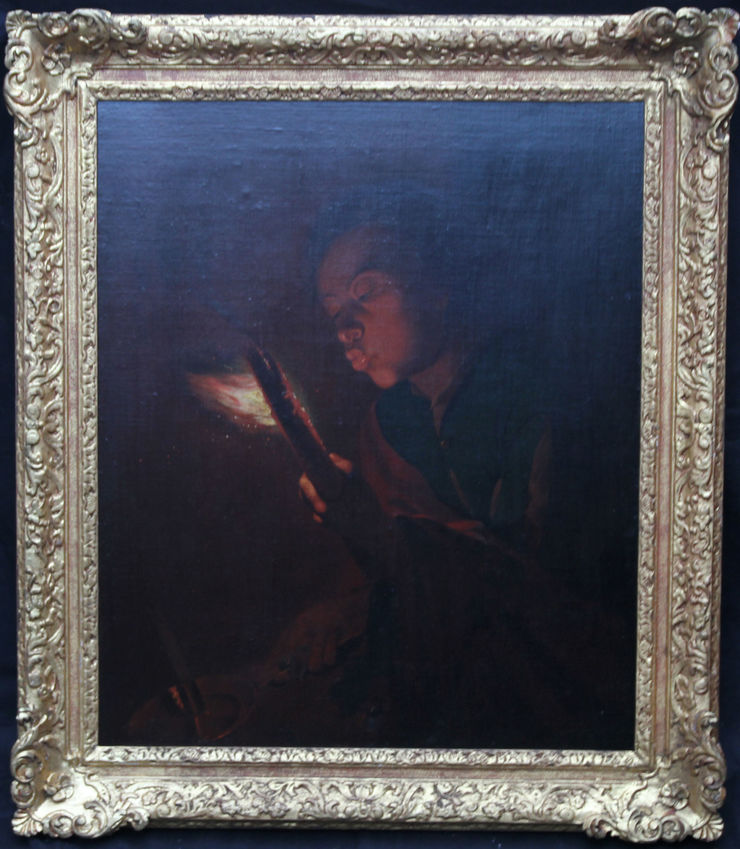Godfried Schalcken (circle) (1643-1706)
| Artist Name | Godfried Schalcken (circle) (1643-1706) |
|---|---|
| Title | Boy Blowing a Candle |
| Description | An original large Dutch Old Master oil on canvas which is attributed to circle of Godfried Schalcken 1643-1706 and studio and has Christies provenance verso. The large canvas is in good clean condition and is a striking example of the candlelit genre scenes for which Godfried Schalken was most famous. The painting dates to circa 1700 and the work recreates the subject of a classical painting, by Antiphilos of Alexandria, described in Pliny's Natural History. Northern painters quickly adopted this motif and the subject of a boy with an ember is found in the work of a long line of Dutch painters such as Gerrit van Honthorst, Hendrick Ter Brugghen, Jan Lievens and Matthijs Stom. Housed in an early 18th century carved wood and gilded frame in good condition. A delightful country house old master painting.
|
| Provenance | Private collection. Christies. |
| Medium | Oil on Canvas |
| Size | 30 x 25 inches |
| Frame | Fine early 18th century frame 40 inches by 35 inches approx |
| Condition | Good condition |
| Biography | Godfried Schalcken (1643-1706). A minister's son, Schalcken first studied with two of Rembrandt van Rijn's students. The small scale of Schalcken's early work and his careful study of textures, color, and light effects reflect that influence. The style of Gerrit Dou of Leiden, his second teacher, can be seen in Schalcken's interest in small genre pieces, painstaking detail, and frequent use of artificial lighting. After three years in Leiden, Schalcken returned to his native Dordrecht in 1665. Possibly under the influence of Frans van Mieris, he then adopted a freer touch, creating gentler transitions and using a lighter palette. In these early years he painted genre and history subjects more than portraits. After the celebrated portraitist Nicolaes Maes left for Amsterdam in 1673, Schalcken became Dordrecht's most popular portrait painter. Between 1680 and 1690, Schalcken won international fame for his subtle rendering of natural and artificial light. In 1691 he was admitted to The Hague painters' society, although officially he continued living in Dordrecht. After spending 1692 to 1697 in England working as a portrait painter, he settled in The Hague, where he died a very wealthy man. |
| Price | SOLD |

